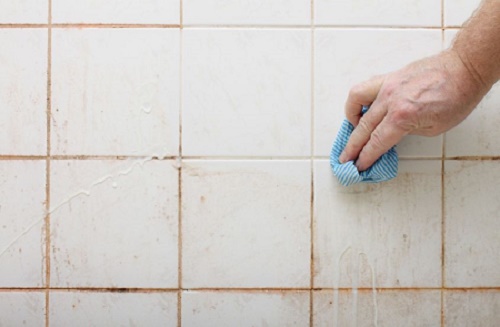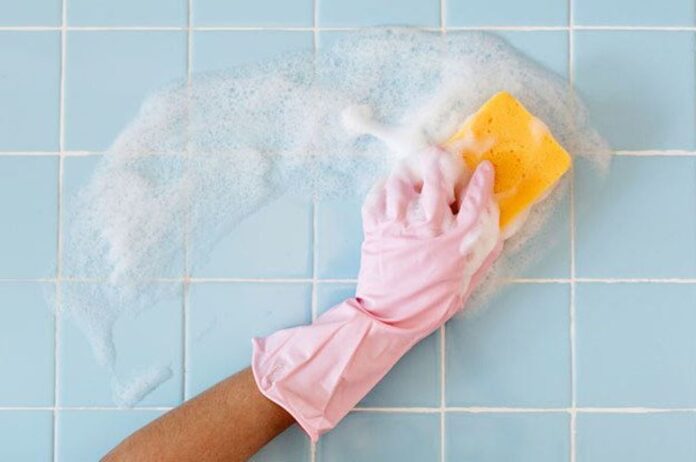How to Remove Limescale from Bathroom Tiles: A Comprehensive Guide
Limescale buildup on bathroom tiles can be a frustrating and unsightly problem. Over time, hard water deposits can leave white, chalky stains on your tiles, making them look dull and difficult to clean. However, fear not! With the right techniques and a little elbow grease, you can easily tackle limescale and restore the shine to your bathroom tiles. In this guide, we’ll walk you through effective methods on how to remove limescale from bathroom Tiles and keep your bathroom sparkling clean.
1. Understanding Limescale and Its Causes
Limescale is a mineral deposit primarily composed of calcium carbonate that accumulates when hard water evaporates on surfaces. The primary culprits behind limescale buildup in bathrooms are hard water and soap scum. The combination of these substances forms a stubborn layer that adheres to tiles, shower doors, faucets, and other bathroom fixtures.
2. Supplies You’ll Need
Before diving into the cleaning process, gather the following supplies:
- White vinegar: A natural acid that effectively dissolves limescale deposits.
- Lemon juice: Another natural acid with a pleasant fragrance that can break down limescale.
- Baking soda: An excellent abrasive agent that aids in scrubbing off limescale.
- Soft cloths or sponges: For gentle and effective cleaning.
- Plastic scrub brush: Ideal for scrubbing without damaging the tile surface.
- Rubber gloves: To protect your hands from harsh chemicals.
- Spray bottle: For easy application of cleaning solutions.
- Old toothbrush: For cleaning hard-to-reach areas.
- Microfiber towel: For streak-free drying.
- Water: Essential for rinsing off cleaning agents.
3. Effective Methods to Remove Limescale

Method 1: Vinegar Solution
Step 1: Prepare the vinegar solution by mixing equal parts of white vinegar and water in a spray bottle.
Step 2: Spray the solution directly onto the limescale-affected tiles and allow it to sit for about 10 to 15 minutes. This will give the vinegar enough time to dissolve the mineral deposits.
Step 3: Use a plastic scrub brush or a soft sponge to gently scrub the tiles, focusing on the limescale areas. Avoid using abrasive scrubbers that could damage the tile surface.
Step 4: Rinse the tiles thoroughly with water to remove the vinegar solution and loosened limescale.
Step 5: Dry the tiles with a microfiber towel to prevent water spots and streaks.
Method 2: Lemon Juice and Baking Soda Paste
1. Create a paste by mixing lemon juice and baking soda to form a thick consistency.
2. Apply the paste to the limescale-affected areas, covering them completely.
3. Allow the paste to sit on the tiles for approximately 30 minutes. This gives the lemon juice and baking soda time to break down the limescale.
4. Gently scrub the tiles with a plastic scrub brush or soft sponge, ensuring you cover all limescale deposits.
5. Rinse the tiles thoroughly with water to remove the paste and limescale residue.
6. Dry the tiles with a microfiber towel for a streak-free finish.
Method 3: Commercial Limescale Removers
If the limescale buildup is severe and the DIY methods don’t yield satisfactory results, you can opt for commercial limescale removers. Ensure you follow the manufacturer’s instructions and take necessary safety precautions when using these products.
4. Preventive Measures for Limescale Buildup
Prevention is key to maintaining a limescale-free bathroom. Here are some preventive measures you can adopt:
- Regular Cleaning: Routinely clean your bathroom to remove soap scum and prevent limescale buildup.
- Squeegee after Showering: After each shower, use a squeegee to remove excess water from tiles and shower doors.
- Ventilation: Proper bathroom ventilation helps reduce humidity and water deposits, minimizing limescale formation.
- Water Softener: Consider installing a water softener to reduce the effects of hard water in your home.
FAQs on Removing Limescale from Bathroom Tiles
What causes limescale buildup on bathroom tiles?
Limescale buildup is caused by hard water containing minerals like calcium and magnesium that leave behind deposits when water evaporates on surfaces like tiles.
What are the signs of limescale on bathroom tiles?
Signs of limescale include white, chalky stains on tiles, shower doors, and fixtures, which can be difficult to clean and may make tiles look dull.
How can I remove limescale from bathroom tiles naturally?
Natural remedies like white vinegar, lemon juice, and baking soda are effective in removing limescale. Create a solution or paste, apply it to the affected areas, let it sit, and then scrub gently.
Is it safe to use vinegar on all types of bathroom tiles?
Vinegar is generally safe for most types of bathroom tiles, but avoid using it on natural stone surfaces like marble or limestone, as the acid may cause damage.
Can I use commercial limescale removers on bathroom tiles?
Yes, commercial limescale removers are effective for stubborn limescale. Follow the instructions on the product and take necessary safety precautions.
How often should I remove limescale from bathroom tiles?
The frequency of limescale removal depends on the hardness of your water and how quickly limescale builds up. Generally, cleaning once a week should prevent significant buildup.
Will baking soda scratch my tiles when removing limescale?
Baking soda is a mild abrasive and should not scratch most tiles when used gently. However, avoid excessive scrubbing on delicate surfaces.
Can I prevent limescale buildup on bathroom tiles?
Yes, you can prevent limescale by using a squeegee after showers, maintaining proper ventilation, and considering a water softener to reduce hard water effects.
Are there any health risks associated with limescale on bathroom tiles?
Limescale itself is not harmful to health, but it may provide a breeding ground for bacteria and mold if not cleaned regularly.
Can I use a pressure washer to remove limescale from bathroom tiles?
It’s best to avoid using a pressure washer on bathroom tiles, especially if they are delicate, as the high pressure may cause damage.
Remember, using natural remedies and regular cleaning will help keep your bathroom tiles free from limescale and looking fresh.
How Much To Rough In A Basement Bathroom
Conclusion
Limescale buildup on bathroom tiles is a common issue, but with the right techniques and preventive measures, you can keep your tiles looking pristine. Whether you choose natural remedies like vinegar and baking soda or opt for commercial limescale removers, regular maintenance is essential to prevent future buildup. By following the methods outlined in this guide, you’ll be well-equipped to tackle limescale and maintain a spotless, sparkling bathroom that you can proudly show off to guests.
Remember, regular cleaning and preventive measures are essential to keeping limescale at bay and ensuring a sparkling, inviting bathroom space.

